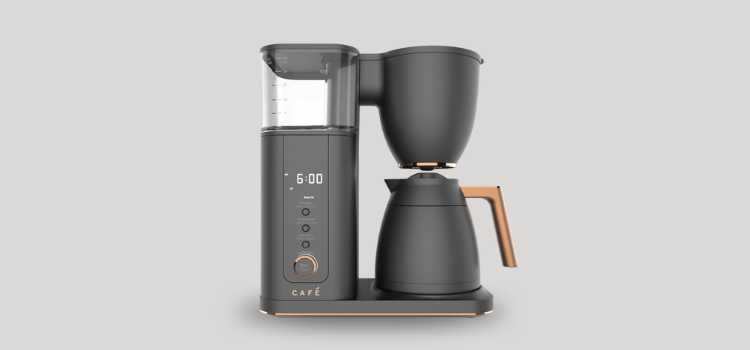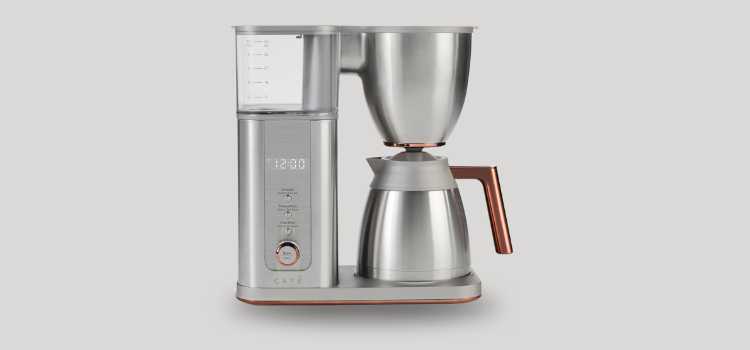As an Amazon Associate, I earn from qualifying purchases

For coffee lovers, the morning ritual of brewing a fresh cup is sacrosanct. Yet, over time, you may notice that your coffee isn’t quite hitting the mark. It might be lacking that robust flavor or the machine seems to be working harder than usual. Enter the often-overlooked villain: mineral buildup. Descaling is an essential maintenance task for any coffee maker, particularly café models that are designed for frequent use.
The buildup of minerals, primarily calcium and magnesium, from hard water can affect the performance of your coffee maker, leading to longer brew times, off-tasting coffee, and even machine failure. This article seeks to guide you through the process of descaling your café coffee maker, ensuring it continues to deliver the perfect brew and lasts for years to come.
Materials Needed for Descaling
Descaling a coffee maker doesn’t require a long list of materials. However, having the right tools will make the process seamless and efficient. Here’s what you’ll need:
- Descaling Solution or White Vinegar: Commercial descaling solutions are specifically formulated to break down mineral deposits. Alternatively, white vinegar is a cost-effective and readily available option that’s often just as effective.
- Clean Water: Essential for rinsing out the descaling solution post-cleaning. Make sure you have enough to run through the machine several times to ensure no residue is left.
- Soft Cloth or Sponge: For wiping down the exterior surfaces of the machine. This helps in removing any spills or residues from the descaling solution.
- Measuring Cup or Container: Useful for measuring the descaling solution or vinegar and water. Precision in mixing ensures the effectiveness of the descaling process.
Step-by-Step Descaling Instructions

A. Preparing the Machine for Descaling
- Empty the Coffee Maker: Before starting, make sure the machine is turned off and cool. Remove any coffee grounds and discard any water left in the reservoir.
- Remove Detachable Parts: Take out any removable components like the drip tray or water reservoir. Wash these parts separately with warm soapy water and dry them thoroughly.
B. Mixing and Adding Descaling Solution
- Measuring the Solution: If using a commercial descaler, follow the instructions on the package for the correct ratio. For vinegar, mix equal parts of water and vinegar.
- Pouring into the Water Reservoir: Pour the descaling mixture into the water reservoir. Ensure it reaches the full capacity line to allow the solution to pass through the entire system.
C. Running the Descaling Cycle
- Starting the Machine: Power on the coffee maker and start a brew cycle. Let the solution run through as if you were brewing coffee.
- Allowing the Solution to Cycle Through: Once the brew cycle is complete, let the solution sit in the machine for about 15-20 minutes. This waiting period helps dissolve stubborn mineral deposits.
D. Rinsing and Cleaning
- Running Clean Water Through the Machine: After the descaling cycle, fill the reservoir with clean water and run at least two full cycles. This ensures that all traces of the descaling solution or vinegar are flushed out, which is crucial for taste and safety.
- Wiping Down the Exterior and Components: Use your soft cloth or sponge to clean the exterior of the machine. Pay attention to any areas where the descaling solution might have splashed.
Tips for Maintaining Your Café Coffee Maker
To keep your café coffee maker in top condition, regular maintenance is key. Here are some helpful tips:
- Regular Cleaning Schedule: Establish a routine cleaning schedule. Rinse the water reservoir and wipe down the machine weekly. Descale every 1-3 months depending on the hardness of your water and how frequently you use the machine.
- Using Filtered Water: By using filtered or bottled water, you can significantly reduce the amount of mineral deposits in your machine. This not only improves the taste of your coffee but also lessens the frequency of descaling needed.
- Monitoring for Signs of Scale Accumulation: Be vigilant for signs of mineral buildup, such as slower brewing times or off-tasting coffee. This will help you address the issue before it affects the machine’s performance or longevity.
Conclusion
Descaling your café coffee maker is a straightforward yet highly beneficial process that ensures your machine performs optimally and brews the best-tasting coffee. Regular descaling prevents the buildup of harmful minerals, extends the life of your machine, and maintains the flavor quality you expect from each cup.
By incorporating descaling into your routine maintenance, you safeguard your investment and ensure that every morning brew remains a delightful experience. Start today, and enjoy the full-bodied flavor that your descaled coffee maker can deliver.
FAQ
How do you descale your coffee maker?
To descale your coffee maker, mix a descaling solution or equal parts water and white vinegar. Pour it into the water reservoir, run a full brew cycle, and let it sit for 15-20 minutes. Finish by running two cycles with clean water to ensure all residue is removed.
Can I use vinegar to descale a coffee machine?
Yes, you can use white vinegar to descale a coffee machine. It’s an effective and affordable alternative to commercial descaling solutions. Simply mix equal parts of vinegar and water, run it through the machine, and follow with clean water to rinse thoroughly.
How to deep clean a café coffee maker?
To deep clean a café coffee maker, first descale it using a solution or vinegar. Detach and wash removable parts with soap and water. Wipe down the exterior. For persistent stains or buildup, use a soft brush or cloth. Regular cleaning enhances performance and flavor quality.
Is descaling solution better than vinegar?
Descaling solutions are specifically formulated to tackle mineral buildup and are often more efficient than vinegar. They can be gentler on your machine’s components, avoiding potential vinegar odors. However, vinegar is a cost-effective alternative that’s readily available and can still do an effective job.
As an Amazon Associate, I earn from qualifying purchases